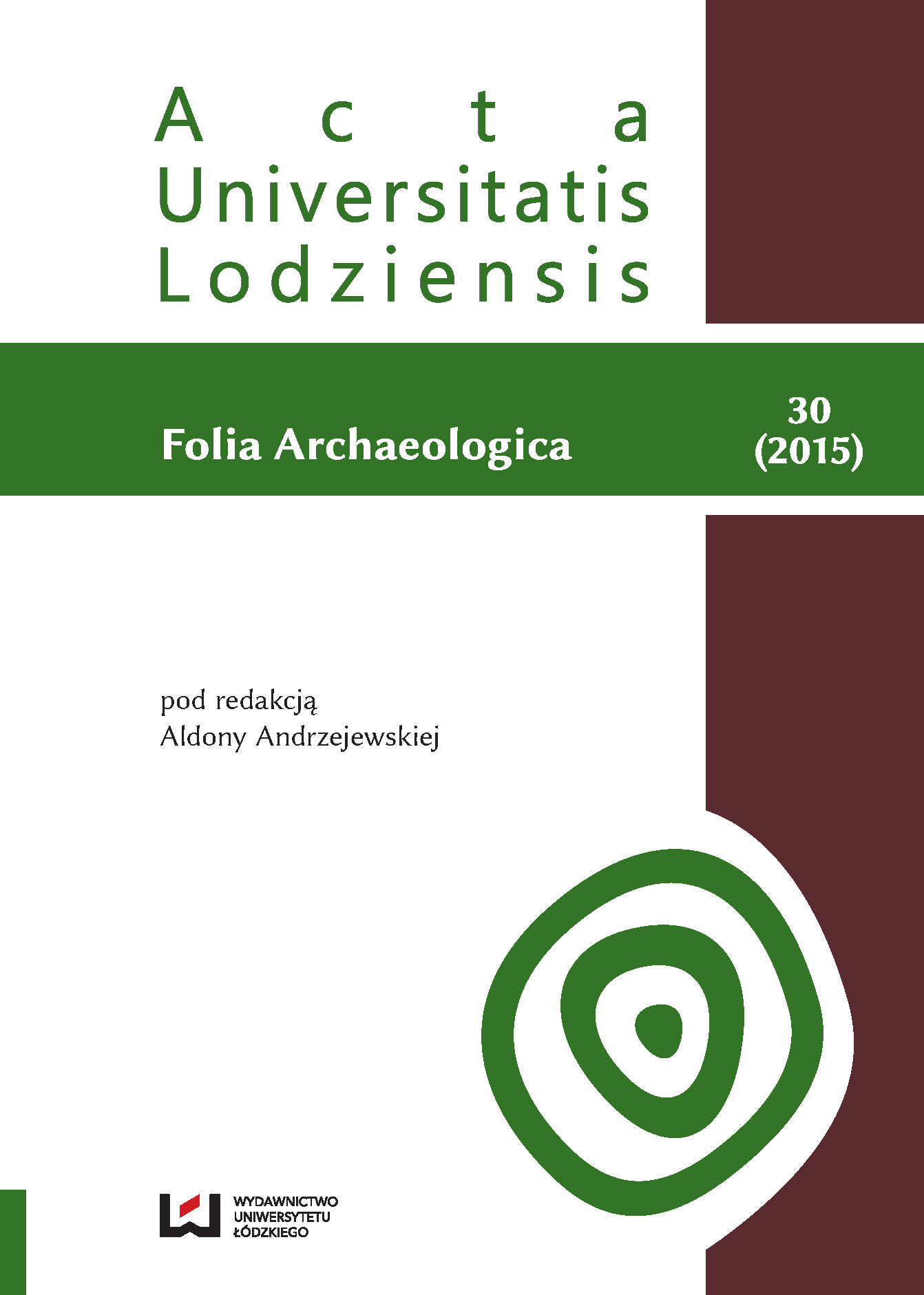Zarys religii Ammonu
DOI:
https://doi.org/10.18778/0208-6034.30.03Słowa kluczowe:
Ammon, Jordan, świątynia Langraum, świątynia boga księżycaAbstrakt
The Ammonites, a people living east of the Jordan River, were neighbors of the ancient Israelites. The Old Testament (1 Kings, 11,5; 2 Kings, 23,13) and probably an inscription from the citadel of Amman mention Milkom as the supreme God of the Ammonites. Most Ammonite names did not contain the name of their national god, but used a more generic divine name, ’El. We don’t know if the name: ’El refers to the Canaanite god or to a local manifestation of this deity. Ammonites also worshiped other deities (i.e. ‘Astarte, ‘Anat, Ba‘al, Hadad/’Adad, Qos, Šamas, YHWH and Yerah). A number of limestone statues and clay figurines of bearded individuals wearing an atef-crown could be Ammonite monarchs or deity (Milkom or ’El). An Ammonite sanctuary has been excavated in Ruğm el-Kursi, situated north-west of Amman. Excavations at this site unearthed a rectangular building measuring 18,70 x 12,60 m. The orientation of the temple is east-west, with the entrance facing east. The Temple of Ruğm el-Kursi is an important example of religious architecture in the Levant. It’s not just about the first Iron Age monumental temple in Ammon and in Jordan, but it is also the first excavated monumental sanctuary of the moon god in the Levant. The two reliefs on the door jambs depicted the full moon within the crescent and confirm that the moon god was worshiped there. Because of the reliefs the sanctuary has been dated to Iron Age II. The temple of Ruğm el-Kursi was divided into two or in three rooms and belongs to the „Langraum” temple type, which is known in the region since the middle of the 3rd mill. BC.
Pobrania
Bibliografia
Amr A. (1986), Ruğm al-Kursi, „Archiv für Orientforschung”, t. 33.
Google Scholar
Aufrecht W. E. (1999), The Religion of the Ammonites, [w:] Ancient Ammon, eds. B. MacDonald, R. W. Younker, Studies in the History and Culture of the Ancient Near East, vol. XVII, Brill, Leiden–Boston–Köln, s. 152–162.
Google Scholar
Daviau P. M. M., Dion P. E. (1994), El. The God of the Ammonites? The Atef-Crowned Head from Tell Jawa, Jordan, „Zeitschrift des Deutschen Palästina-Vereins”, t. 110, s. 158–167.
Google Scholar
Herr L. G. (1997), Archaeological Sources for the History of Palestine. The Iron Age II Period: Emerging Nations, „Biblical Archaeologist”, t. 60, s. 114–183.
Google Scholar
Herr L. G. (2006), An Early Iron Age I House with a Cultic Corner at Tall al-‛Umayri, Jordan, [w:] Confronting the Past. Archaeological and Historical Essays an Ancient Israel in Honor of William G. Dever, eds. S. Gitin, J. E. Wright, J. P. Dessel, Eisenbrauns, Winona Lake, s. 61–73.
Google Scholar
Herr L. G., Clark, D. R. (2008), Excavations at Tall el-‛Umayri, 2006, „Annual of the Department of Antiquities of Jordan”, t. 52, s. 181–202.
Google Scholar
Hübner U. (1992), Die Ammoniter: Untersuchungen zur Geschichte, Kultur und Religion eines transjordanischen Volkes im 1. Jahrtausend v. Chr., Abhandlungen des Deutschen Palästinavereins, Bd. 16, Harrassowitz, Wiesbaden.
Google Scholar
Lemaire A. (1994), Déesses et dieux de Syrie-Palestine d’après les inscriptions (c. 1000-500 av.n.è.), [w:] Ein Gott allein?, eds. W. Dietrich, A. Klopfstein, Göttingen Universitätesverlag, Fribourg, s. 127–158.
Google Scholar
Puech E. (1999), Milcom, [w:] The Dictionary of Deities and Demons in the Bible, eds. K. van der Toorn, B. Becking, P.W. van der Horst, ed. II, Eerdmans, Leiden, s. 576.
Google Scholar
Routledge B. (2004), Moab in the Iron Age. Hegemony, Polity, Archaeology, University of Pensylvania Press, Philadelphia.
Google Scholar
Tigay J. H. (1986), You Shall Have No Other Gods. Israelite Religion in the Light of Hebrew Inscriptions, Harvard Semitic Studies 31, Scholar Press, Atlanta.
Google Scholar
Pobrania
Opublikowane
Jak cytować
Numer
Dział
Licencja

Utwór dostępny jest na licencji Creative Commons Uznanie autorstwa – Użycie niekomercyjne – Bez utworów zależnych 4.0 Międzynarodowe.












